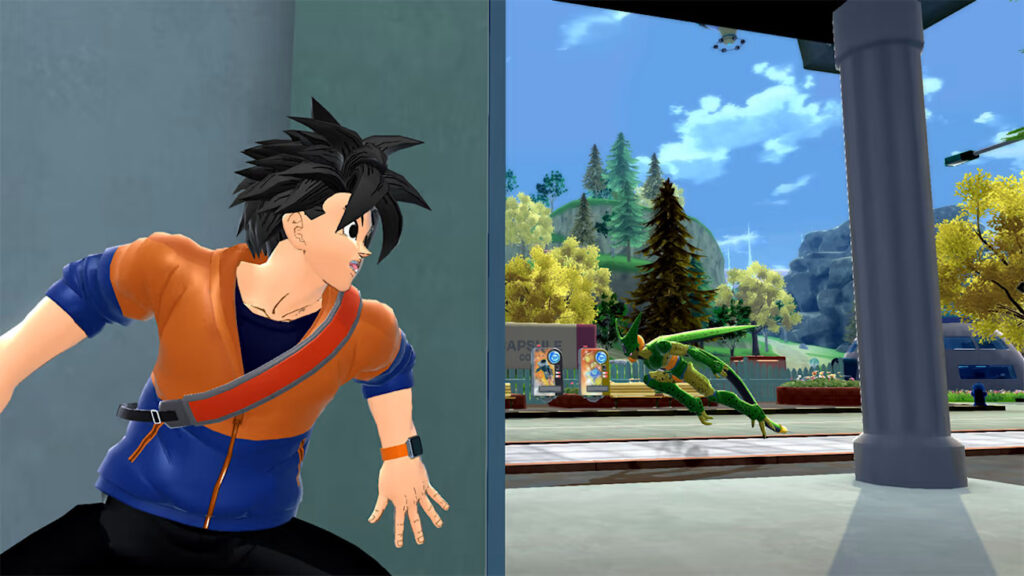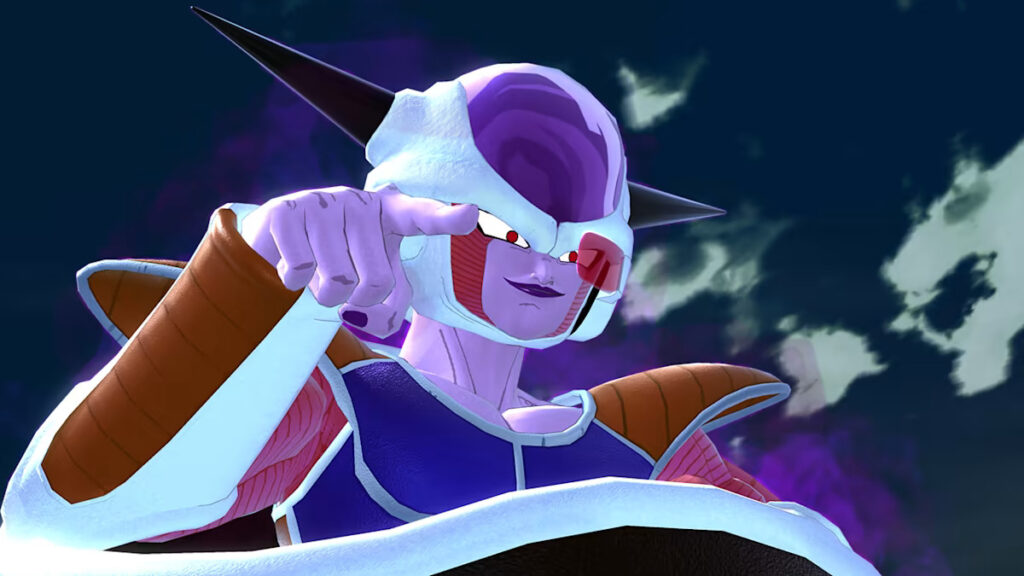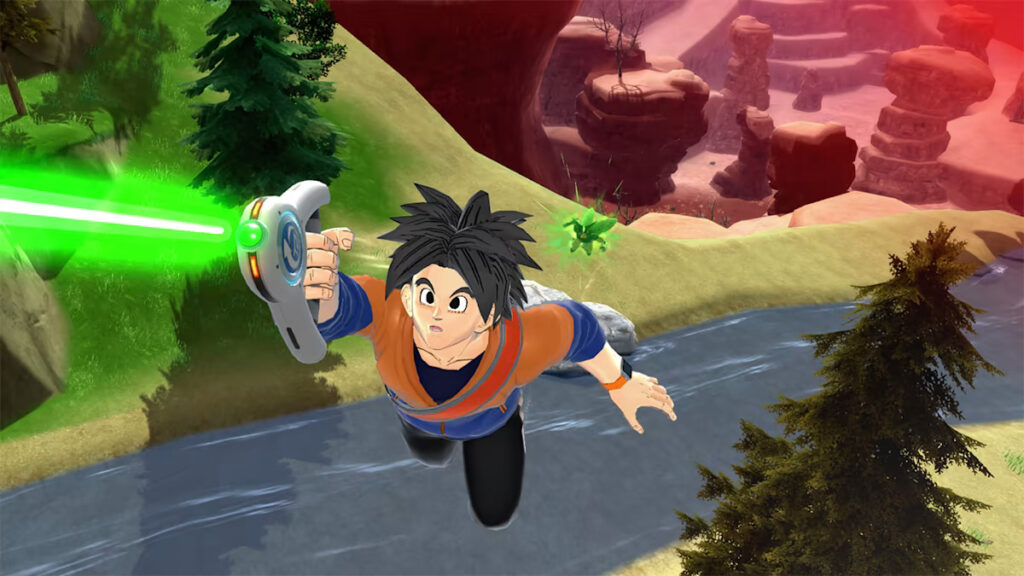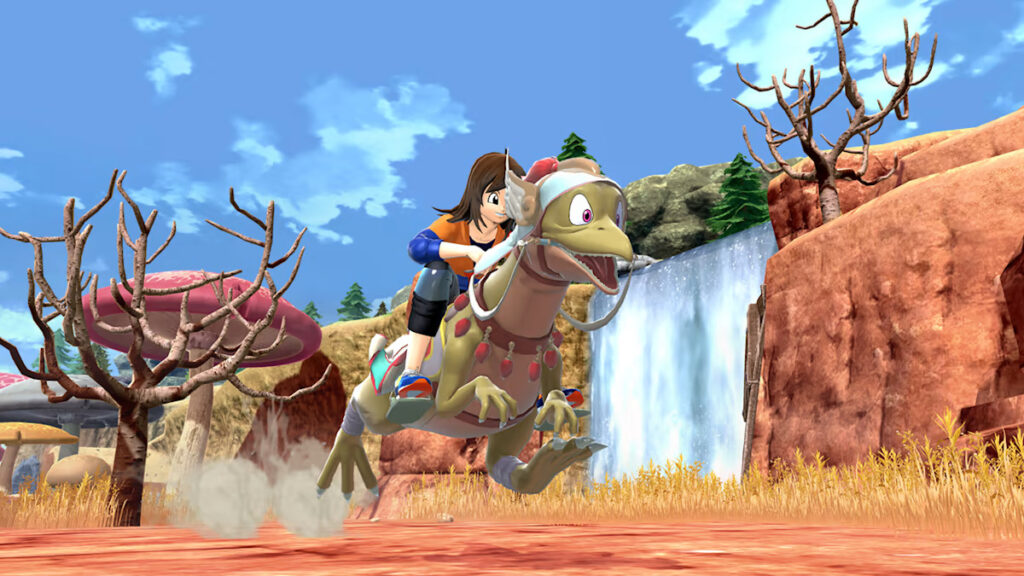
Developer: Dimps
Publisher: Bandai Namco
Platform: PC, PS4, PS5, Xbox One, Xbox Series XIS, Switch
Tested On: Switch
Dragonball: The Breakers – Review
With the sheer amount of games released over the last few months, it’s inevitable that some high-profile releases slipped under our radar. Now that the Christmas season has wound down, we can slip in a handful of titles that we missed before things start to ramp up again. The subject of today’s review is such a title. Dragonball: The Breakers is an asymmetrical 1 vs. 7 online multiplayer game that actually debuted in mid-October, but we only got around to giving it a go now. That’s not necessarily a bad thing, as early reports about The Breakers’ online performance weren’t all that positive, to say the least, with random game crashes apparently a common issue. With a few months to work out the kinks behind us, how does The Breakers hold up?
Story
The sheer nature of The Breakers as an online multiplayer experience prevents the game from delivering a fully fleshed-out story arc. Instead, The Breakers follows a fairly simple premise. Players either take on the role of a Raider or one of the seven Survivors. The Survivors have become stranded in a so-called Temporal Seam and must either collect keys to boot up a time machine that lets them escape the area or team up to defeat the Raider. The Survivors are the Dragon Ball universe’s closest equivalent to your average, everyday person. Meanwhile, the Raider takes on the form of one of many iconic Dragon Ball villains, including Majin Buu, Cell, or Frieza, with others to be added in future updates. There isn’t anything more to The Raiders’ premise. It’s simple, but it works enough within the game’s asymmetrical gameplay concept.
Graphics
From a visual point of view, The Breakers is a mixed bag. Akira Toriyama’s visual style can translate fantastically into video game graphics, as we’ve recently seen in Dragon Quest Treasures, as well as the smorgasbord of other Dragon Ball games. The Breakers is clearly recognizable as a Dragon Ball game, with a mix of cute and tough character designs and varied environments. At first glance, everything looks great. Look a little closer though, and the cracks start to show. Textures are muddy and lacking in detail. It’s also difficult to describe without seeing it for yourself, but there is a visual oddity where the characters don’t feel like they’re actually walking around in the environment. They don’t feel “connected” to the world, and running around seems more like they’re skating on the ground rather than actually walking. It feels unpolished and unfinished.
Sound
We’re not familiar enough with Dragon Ball’s plethora of media to know whether or not the music used here is original or if it’s something that hails from the many anime series, but it’s certainly fitting for the atmosphere. The game also features voice acting during the tutorial and in key moments, but given the nature of the game as an online multiplayer title, the scope of voice performances is understandably limited. Overall, The Breakers’ soundscape is serviceable but not outstanding.
Gameplay
The core concept of The Breakers, which sees “weaker” players team up against a single player who takes on the role of a powerful enemy isn’t new. Games like Secret Neighbor, Evil Dead, and Friday the 13th adhere to a similar formula. The Breakers’ main selling point here is the Dragon Ball setting of course, and although the game sticks fairly close to the established conventions of similar titles, there are just enough Dragon Ball-specific elements present to give The Breakers its own sense of uniqueness. Survivors are able to gather the titular dragon balls, for example, which allows them to make a wish to Shenron, enabling them to increase either Dragon Change Level or temporarily power up their Survivor. This is an incredibly powerful ability that can flip the game around, but actually collecting the balls can be a very difficult task, depending on how skilled the Raider player is at dealing with his opponents. The Dragon Change allows players to temporarily transform into powerful Dragon Ball characters, so the power dynamic between the two sides can shift in key moments. This is done through that Shenron wish, as we mentioned, but it’s also accessible through an item obtained through in-game gacha mechanics (which we’ll get into a bit further down). It means that although Survivors have some tools at their disposal, they have to put in some work first.
The Raider doesn’t start out at full power. Power levels are a thing, just like in the source material, and the villains gradually go through a series of transformations as they pick off individual players, building up their power in the process. Each Raider comes with a distinct play style, but you’ll have to sit through a fairly large number of matches before you are able to give them all a try. There is only a one in eight chance that you end up playing the Raider, although The Breakers has a fairly interesting matchmaking system that ensures you won’t go for long stretches of having to play as a Survivor. While roles are assigned randomly, every round that you do play as a Survivor increases your Raider priority by one, increasing your chances of becoming the villain in your next match. Matches typically take around ten minutes or so, and the skewed ratio means that you’ll be assigned the role of Raider roughly once every hour. That means that you’re going to be pouring in a lot of time if you want to build up your skillset with one of these characters effectively. Still, playing as the Raider is probably the best aspect of The Breakers.
That’s not to say that you can’t have fun as a Survivor instead, but a lot of the overall enjoyment depends on the performances of the teammates you’re paired up with randomly. You only have limited means of communication, and working together can feel frustrating as a result. This isn’t something that only applies to The Breakers of course, but the game is likely much more enjoyable if you can get friends together and cooperate instead of simply jumping into a random online match and hoping for the best. Of course, you’d still need to convince your friends to pick up the game for this. It doesn’t help that The Breakers’ controls are wonky enough to prevent the game from feeling very accessible. Moving the camera around to aim a grappling hook or missile launcher can be especially frustrating and we often found ourselves simply firing and hoping for the best rather than actually directing our shot towards a target. The same applies to long jumps, and we occasionally ran into issues where our view clipped into a wall, rendering us unable to respond to the Raider chasing us as a result.
Progress of your own Survivor character is tied to how successful you are online, and you’ll need to grind out money to obtain new powers, items, and additional characters through an in-game gacha system. If you run into a bad streak, either through poor team performance or simply bad luck, then your character progress also grinds to a halt, which can really take the enjoyment out of an evening of playing The Breakers. We’d be more forgiving if The Breakers was a free-to-play title, but this is a game that you’ll have to cough up €19.99/$19.99 for in the first place. It’s not a huge amount of cash compared to many other video games, but The Breakers feels like it should have been F2P in the first place, because the game relies on microtransactions to acquire TP tokens. These are the in-game currency used to buy cosmetics and gacha spins. You can also use Zeni, a different currency earned by playing, but this is accumulated at a very slow rate of course. Items can really make a difference, especially those that increase your Dragon Change Level, to the point that The Breakers has the air of a pay-to-win title.
While we can’t speak for the other platforms that The Breakers is available on, we were less than impressed with the game’s performance on the Switch. We didn’t experience any of the game crashes that were apparently common when the game initially launched, but we still had to deal with lengthy matchmaking times, wonky controls, and poor visual performance. Of note here is that The Breakers doesn’t support crossplay. In this case, however, that’s a good thing. The performance on the other platforms is supposedly better, which would put Switch players at a disadvantage. It’s perfectly possible that your mileage may vary on PlayStation, PC, or Xbox, but The Breakers’ performance on the Switch is so underwhelming that it’s difficult to recommend this one, even if you’re a fan of the concept. Of course, The Breakers’ nature as an online game means that content updates and performance updates are frequent, so perhaps in a year or so, the game might be a lot more enjoyable. Whether or not The Breakers will survive that long will depend on how many players remain hooked. At the moment, there are too many deterrents here to keep players engaged for more than a few hours.
Conclusion
The Breakers is one of those titles that works a lot better in concept than in practice. The idea of surviving the onslaught of a famous Dragonball villain as a regular human is certainly interesting, and being able to go on a power trip as that villain is enticing, but The Breakers is let down by poor performance, predatory monetization, and a wonky camera. Hopefully the game continues to improve with new updates in the future, but right now The Breakers is a letdown.
Dragonball: The Breakers - Review,









No Comments